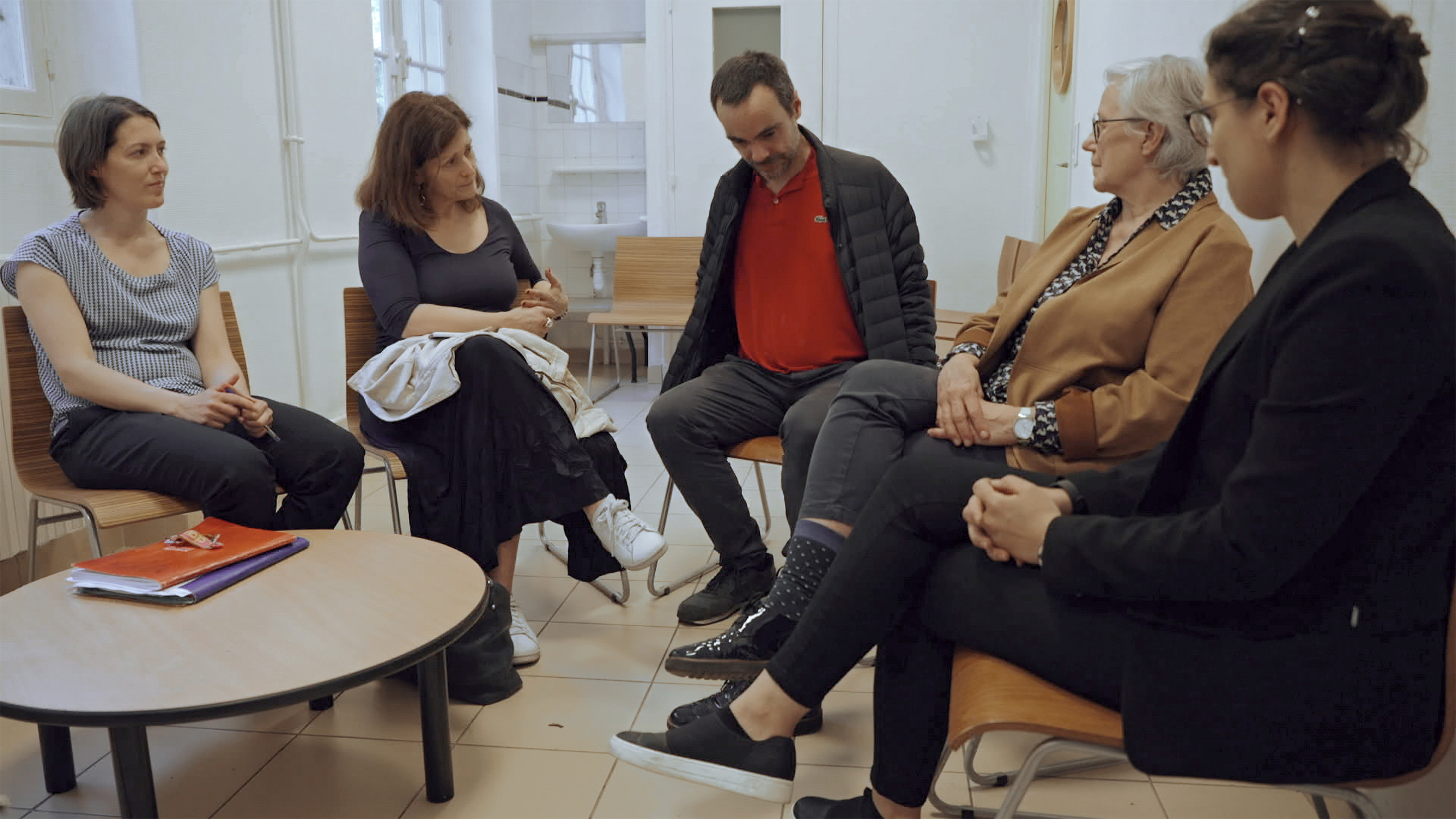Scoop 8: August 9, 2025
This edition features one recent novel. A Simple Procedure is about a surgical procedure that can put an end to mental disorders—where have we heard that before? We also focus on a masterful, unmissable documentary trilogy about the reception and care of psychiatric patients in Paris.
Here you can find the PDF of this edition.
Comments, questions, tips, criticism, and praise can be sent to: scoop0329@gmail.com
Novel
A Simple Procedure, Yael Inokai,. (Original language: German, not translated into English)
A surgical dystopia

“At the time,” Meret says at the beginning of A Simple Procedure by Swiss author Yael Inokai, “I was a nurse in a hospital where new procedures were being performed. These procedures were supposed to free people from their mental illnesses and give them a new future, a real future, not just survival.” She was in her mid-twenties at the time and believed that the brain was like a map: “Everything I am is located somewhere.” This included any disorders and conditions, no matter how trivial, such as regular anger attacks. Her job was to distract patients—mostly women—during the surgical procedure, which was performed while they were fully conscious.
Inevitably, things sometimes go wrong, the surgeon confided to her, because: “Progress can be painful. Things get better, but first they get worse. That’s just the way it is.” Meret realizes: “The after-effects could be painful, but they passed. Then something new began. That’s what I was taught. That’s what I held on to.”
In addition to Meret, the novel focuses on three other women: her roommate and colleague Sarah, with whom Meret falls passionately in love; the fortunes of Bibi, Meret’s free-spirited sister and, in that respect, her complete opposite; and the case of Marianne, whose operation goes wrong.
Meret takes her under her wing – at first purely professionally, later as a concerned friend. Inokai leaves out the ‘at the time’ from the opening of her story and does not mention where it takes place. The atmosphere and manners suggest the early 1950s.
There are hints of lobotomy. The hierarchy between doctors, nurses, and (female) patients seems set in stone. Male doctors rule over female nurses. Nurses disapprove of compassion for patients, adhering strictly to rules, guidelines, and routines.
One is tempted to say that the work is carried out with merciless Swiss (or German?) precision.
Inokai’s style is sober and the construction of her novel—call it a Margaret Atwood-esque dystopia—is as inventive as it is effective. Moreover, she does not unnecessarily emphasize her well-considered themes. Sometimes you have to read between the lines. For example, one of the doctors tells Meret that people are punished for their appearance and their illnesses. “You and I have a duty to protect people from punishment. That’s a bold statement, I know. There’s a lot to be said for the intervention, and I see that as part of it.”
What is disturbing is that he is driven by an even deeper, much darker motivation: ‘What do you think will happen if things go back to the way they were? Suppose it only gets a little bit bad. That’s enough. Then they’ll say, “So-and-so can live, but so-and-so can’t.” You and I know very well that this is always a possibility. Things become… fragile. I’ve learned that during my life.“ In short: progress is not only halting and uneven, it is apparently also ”intended” to prevent worse things from happening.
When Meret runs into a former patient who seems to have lost all her vitality after the operation, her doubts about the procedure grow. She already had doubts about her beloved Sarah: “Wouldn’t they say that about us? That it’s a mental illness?” Meret has always been guided by the assumption that medicine stands “on the shoulders of hope.” “I had to keep that alive, no matter how hopeless the situation was.”
How she does that and ultimately ‘saves’ Marianne, whose operation went wrong, will remain a mystery here. Suffice it to say that Yael Inokai’s award-winning novel has made a big impression in German-speaking countries.
Henk Maassen
Film
La machine à écrire and Averroès & Rosa Parks, (French language)
Together with Sur l’Adamant, these films can also be seen via picl.nl
Triptych about vulnerable individuals
First, in 2023, there was the brilliant documentary Sur l’Adamant, made by Nicolas Philibert, known for the equally magnificent Être et Avoir about a rural school in France. Sur l’Adamant is an impressive portrait of a handful of psychiatric patients who find a safe haven on an ark on the Seine. With music workshops and drawing studios, culture is central to life on the ship. Because culture makes life worth living. One of the clients talks about his artistic affinity with Vincent van Gogh. Another responds to the question of whether he has a profession: “No. Poetry, but that’s not a profession.” Yet another explains how science fiction, comics, and pop music keep him going.
Sur l’Adamant, it turns out, is the first part of a trilogy. The other two parts are now coming to the cinema: La machine à écrire and Averroès & Rosa Parks. In La machine à écrire, Philibert visits some of the people we know from Sur l’Adamant. He films them at home as volunteers come to repair a broken appliance or help with another household problem. Philibert situates them in their environment and occasionally asks them a question. In this way, he makes it clear how essential this simple help is for these people.
In Averroès & Rosa Parks, two wards of the Esquirol hospital in Paris, he recorded a series of conversations between clients and care workers. This format makes the tone of this long documentary (but the 143 minutes fly by) somewhat heavier than that of the other two films. During the individual or group sessions with the psychiatrists, the clients speak openly and calmly about their problems, but sometimes we hear the shouting and wailing of fellow patients in the background. And underlying everything is the poignant discomfort of staff shortages and the obstacles posed by the coronavirus pandemic (face masks!), when part of the documentary was filmed.
Not only does a variety of psychiatric disorders come to the fore, but above all we are introduced to diverse, troubled but often unforgettable personalities. Such as Noé, a Jewish Buddhist who is deeply inspired by the work of the philosopher Nietzsche; a girl with suicidal thoughts—the only time Philibert speaks directly to a patient; the old lady with deep, heart-rending fears; the man who hasn’t worked for twenty years but is well aware that without work he has no “social identity”; the man who—is he bipolar?—makes a brilliant argument against the current education system that many sleepy teachers and education administrators could benefit from.
They are intelligent, tragic people, often a kind of vulnerable philosopher who – perhaps typically a product of the French education system – not only know who Nietzsche, Kant, Socrates, Aristotle, and Kierkegaard were, but are also familiar with their work. A few even identify with one of these thinkers.
We see how they come together in conversation sessions where ‘respiration et affection’ are supposed to set the tone, and that usually works. This makes this triptych an unadorned, loving ode to people who have become trapped within themselves or in the systems in which they cannot live, and to their caregivers.
Henk Maassen